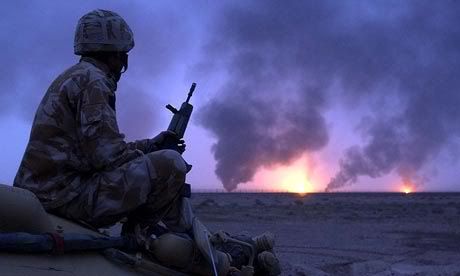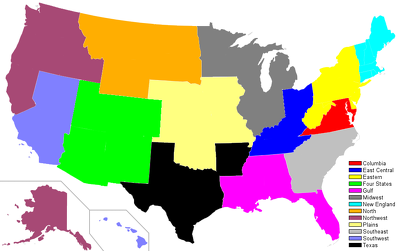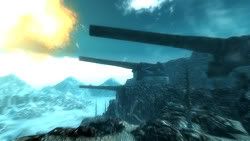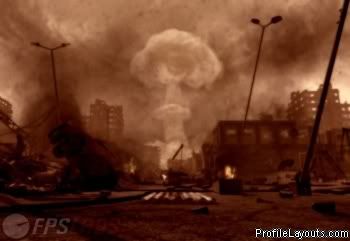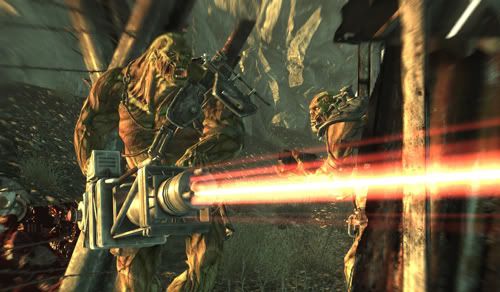Prologue
" War has truly come full circle. At first, cavemen fought each other for survival. Access to food, water, basic necessities. Then we've gone and invented wars for religion, then for the power of the state, and then for ideology, then for profits. Now, we find ourselves back at square one, fighting for the last drop of oil or for the last drop of water. I'm kind of looking forward to it actually, at least we've dropped all the false pretenses and ideological bullshit of 'dying for your country'. Now we're back to what war really is about, survival of the fittest. The honesty is kinda refreshing don't you think?"
- Anonymous Soldier, 2077 AD
The Advancements of the 21st Century
The twenty first century brought about many advancements to humanity, advanced robotics, fusion cells, plasma and laser technology. No other country prospered more from these advances than the United States of America, the only truedominant superpower that emerged from the second world war. However, the technology came at a heavy price, for the United States found itself heavily dependent on energy resources from abroad, such as fossil fuels from the Middle East. However, the politicans and scientists, the brightest minds of the planet did not worry. So long as the flow of energy supplies from the Middle East remained unabated at least for the short run, it would only be a matter of time before alternatives to fossil fuels were developed, already in the 2050s, the United States was looking into two alternative solutions, Fission and fusion power.
Few noticed however, the combination of corporate and special interests pressuring the US politicans to forestall development in alternative energies, in order to literally remain profitable to the last drop. Research projects that could have taken years with proper funding were pushed back to decades. Europe and China as well, suffered similar problems with change. As a result, it wasn't until 2066 when the first crude fusion cell was unveiled in the United States, by then, fossil fuel reserves in most of the world had run dry.
By 2077, Microfusion cells were commonplace, used widely for energy consuming technologies ranging from laser rifles to cars, as well as the newly developed power armor. But by then it was too late, the politcal and economic forces which had been building up for the better part of the century, had reached critical mass.
Surviving historical archives pinned the start of the resource wars to 2052, by that time, several smaller countries around the world had already gone bankrupt, governments collapsing under the strain of socio-economic forces even they could not control. Pushing many other countries to join leagues and alliances such as the European Commonwealth to husband their political and military strength.
It is in that same year that the United Nations began to collapse. Unable to help its bankrupt member states, disgusted nations withdrew their membership even as the world body tried desperately to keep the peace. Although it lingered on for two more decades, whatever power the United Nations had in the world stage had dissipated.
Tensions quickly escalated, in response to rising oil prices, the European Commonwealth resorted to military action, sending its forces to the middle east to occupy the last remaining wells. A long drawn out ground war resulted, lasting several years.
The United States meanwhile, established the Anchorage front line in 2059, increasing its military presence in Alaska as a deterrent to a resource hungry China, which was aware of the oil reserves in the arctic state. The build up of US armed forces in the region was a major source of tension between the U.S and Canada, with the United States putting pressure on its northern neighbour to allow American military units within their borders to guard the Alaska pipeline.
By 2060, the eight year long war in the Middle East between the Arab league and the European Commonwealth end in a stalemate as the last oil fields run dry. Within 8 years, the entire region is devastated as limited nuclear exchanges wipe out several cities within the region, such as Tel Aviv. With no more oil in the Middle East, and public anger over the devastation caused to both sides, there was no longer any point to continuing the conflict, and the European Commonwealth soon collapsed into quarreling nation states, reviving old hatreds that had their roots centuries ago.
The American Commonwealth
By 2060, with the European Commonwealth and the Middle East in ruins, and the United Nations disbanded, the United States had no real rival on the international stage, save the People's Republic of China, which had become the second largest economy in the world.
However, with the political instability threatening countries around the world as well as increasing mistrust of the federal government by American citizens, the United States government sought to limit anti-government dissent by instituting the Commonwealth program, which created an intermediate government between the state and federal level.
America was divided into thirteen separate, semi-autonomous common wealths. The fifty stars on the flag were soon replaced by the new star spangled banner. Thirteen stars to represent the common wealths, and the single star for the Federal government.
By now, most of the countries around the world had collapsed under the weight of their own political and social forces, the common wealths brought the United States a temporary period of political stability while it sought a solution to the problem that was threatening to engulf the world.
Project Safehouse
The limited Nuclear exchange between the Europeans and the Middle East brought the reality of nuclear war closer to home than any threat from the former Soviet Union. Accordingly, congress passed the 'Homeland Protection Act", which authorized the government to establish Project Safehouse.
Project Safehouse called for the creation of 122 underground shelters that would save a select portion of American society from the impending Nuclear war. Known as 'Vaults', these were extensive subterranean installations, which could shelter one thousand people each from a nuclear blast. Each vault was self sustainable, equipped with construction equipment, hydro-agricultural farms, water purifiers, defensive weaponry, communications equipement as well as power reserves to last over 900 years (thanks to the newly developed microfusion cell technology). Construction of these vaults was contracted to a private company known as 'Vault Tec', and it was to be the most expensive government funded program in US history.
These Vaults proved vital in the coming Great War.







